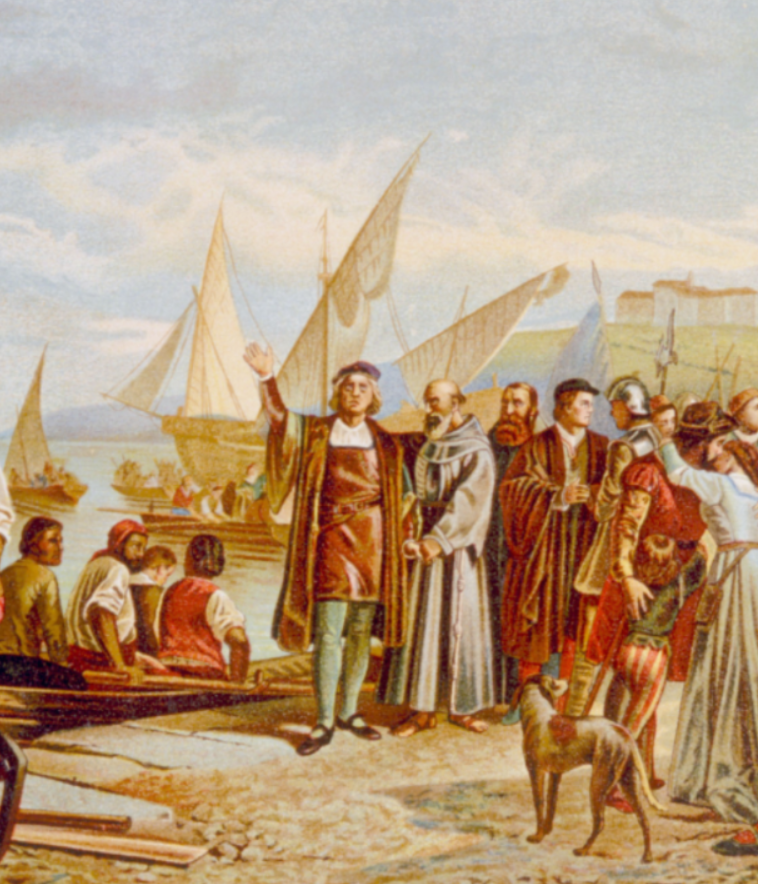- UNITS
- Unit 7 - Christopher Columbus
- The Game of Words
- Prof. Xue and Luk's Conversation
- An Active Reader
- Asking Questions
- Language Knots
- Test Corner
- LEARNING

♦ This introductory exercise aims to give you a feel for the sound and rhythm of the language, whilst presenting an overview of the maritime topic at hand. ♦ By reading and then listening to the accompanying audio, you’ll discover how words are pronounced and some simple sentence structures. ♦ Once you are comfortable with how the written and spoken words are connected, you’ll be ready to focus on keywords in the next exercise.
Christopher Columbus
The most significant journey of the Great Age of Discovery was not made sailing eastward, but by sailing westward. The hero of the journey was waiting at the docks in Lisbon to see Bartolomeu Dias on his return home.
Christopher Columbus was an ambitious captain from Genoa. He wanted to find a European monarch to fund his own journeys of exploration. Columbus had read Marco Polo’s Travels, and he knew of the journeys of the caravels down the West African Coast. By this time, many educated men now believed the earth was a sphere, not a flat surface. Columbus believed in this theory and the calculations of the Greek astronomer Ptolemy. Therefore, he wanted to sail west to find a direct route to the riches of the Indies and Asia. A direct route was very valuable, as sailing around Africa was a long diversion, and the overland route was expensive, dangerous, and took too much time.
Columbus’s plan was rejected by the King of Portugal, they did not believe it was possible. King Ferdinand of Castile and Queen Isabella of Aragon, both of today’s Spain, accepted Columbus’s daring project and paid to supply his three ships. The Nina, the Pinta, and the Santa Maria set sail in September 1492. The five-week journey sailing west passed smoothly, then a crew member of the Pinta spotted land first, Columbus had arrived at the Bahamas in the Caribbean.
Columbus explored more islands to the south-west including Cuba. He was sure he had found Asia, and then returned to Spain to tell the royal court of his achievement of a western route to Asia. The Caribbean was first called the West Indies (‘West ‘India’-s) for this reason. Columbus made three more voyages across the Atlantic, he explored the Caribbean and claimed many islands as Spanish territories. These later journeys gave Columbus a basic understanding of the circular winds of the North Atlantic. He learned that the winds further North mostly blew westward, but that winds further south blew eastward. These wind patterns would enable Atlantic trade in the following centuries.
Columbus' discovery led to the 1492 Treaty of Tordesillas between the Spanish and Portuguese. The treaty was negotiated by Pope Alexander VI; it stated that all new discoveries west of a line of longitude 370 leagues west of the Cape Verde Islands would belong to Spain, and all discoveries to the east of this boundary would belong to Portugal. Part of the treaty stated that the Spanish had to convert all of the native peoples to Christianity. The treaty’s signing encouraged Portugal to find an eastern route to India. Without the parties realising at the time, the boundary of the treaty also allowed Portugal an undiscovered part of the South American continent, today’s Brazil.
